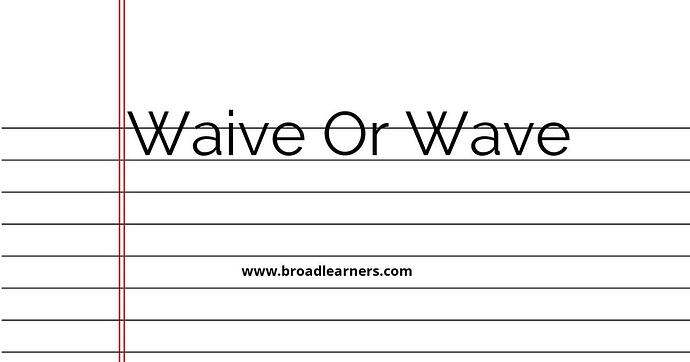'Waive' and 'wave' are commonly confused words in English grammar. Understanding the difference between 'waive' and 'wave' is important to use them correctly in written and spoken English.
'Waive' is a verb that means to voluntarily give up a right or claim, or to refrain from enforcing something. It is often used in legal or formal contexts.
'Wave' can be both a noun and a verb. As a noun, it refers to a long body of water that moves in a regular pattern. As a verb, it means to move one's hand or an object back and forth in a greeting or as a signal.
Let's take a closer look at the meanings and usage of 'waive' and 'wave'.
| 'Waive' | 'Wave' |
|---|---|
| The word 'waive' is used to voluntarily give up a right or claim, or to refrain from enforcing something. | The word 'wave' can refer to a body of water or to the action of moving one's hand or an object back and forth. |
|
|
To remember the difference between 'waive' and 'wave', it can be helpful to think of 'waive' as giving up or refraining from something, while 'wave' is associated with the motion of moving one's hand or an object back and forth.
Here are some examples of correct usage:
- The athlete decided to waive his right to compete in the race.
- The company waived the fee for the first-time customers.
- The waves at the beach were perfect for surfing.
- She waved to her friend from across the street.
Remembering the correct usage of 'waive' and 'wave' will improve your grammar and communication skills.
